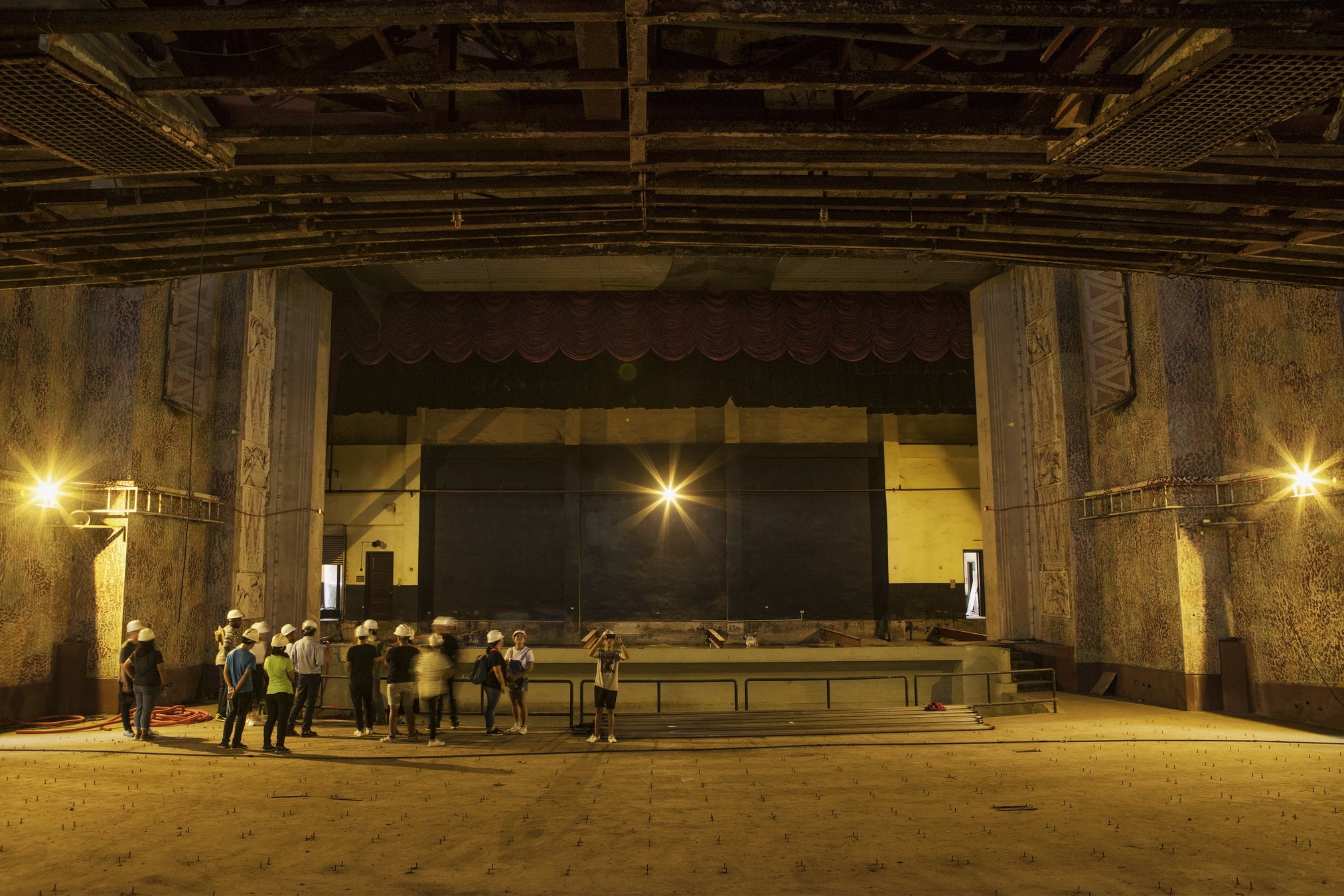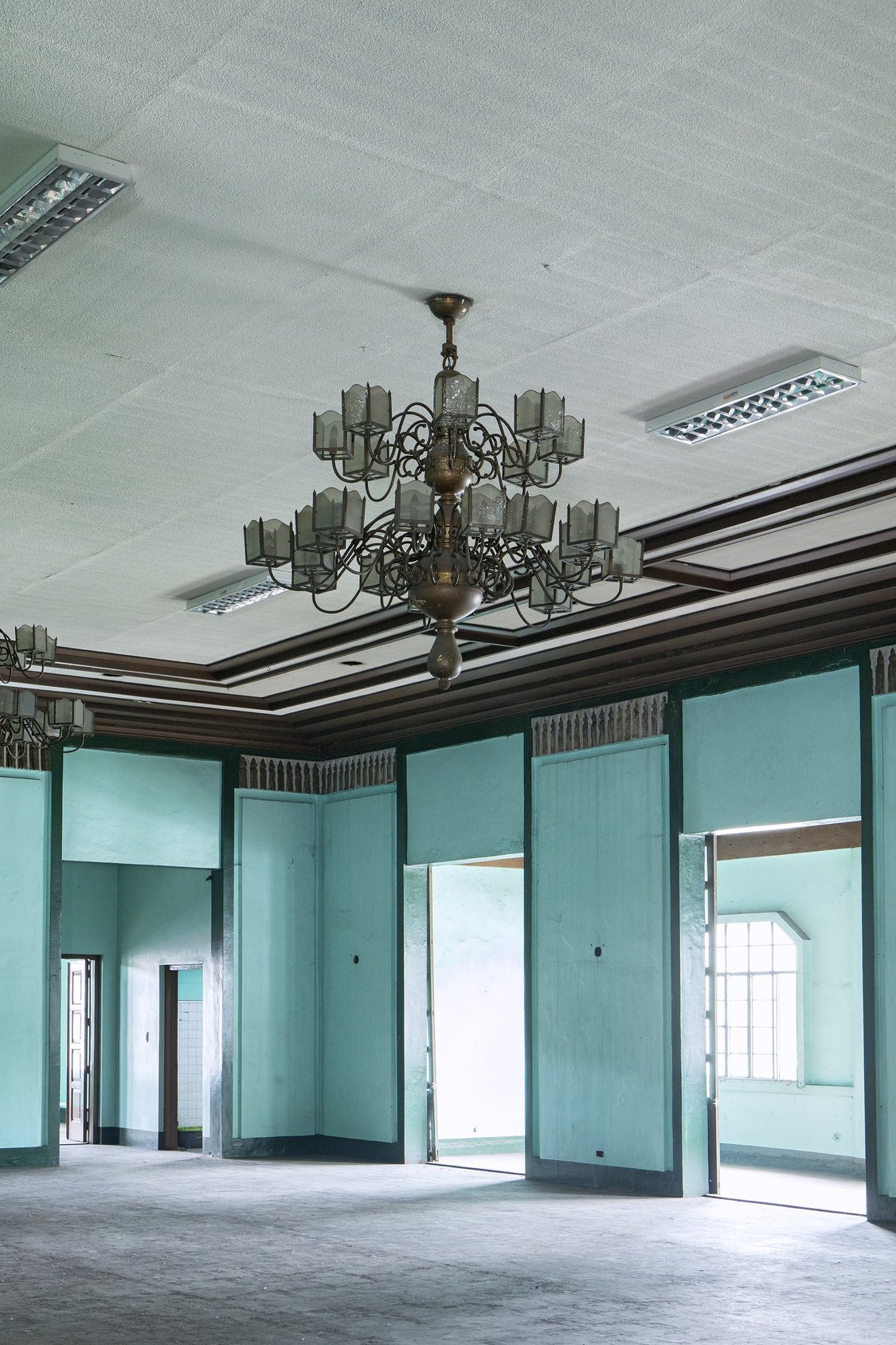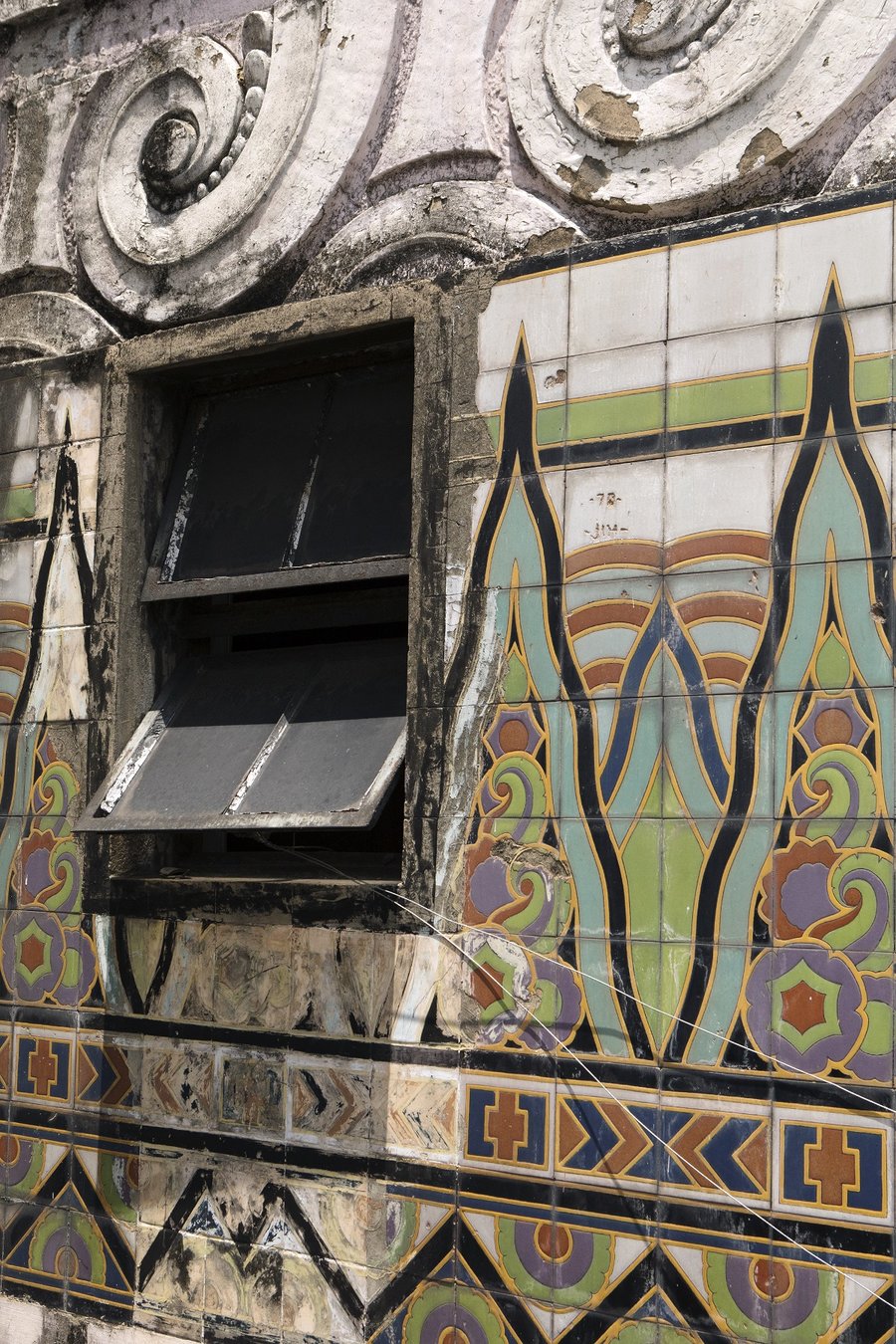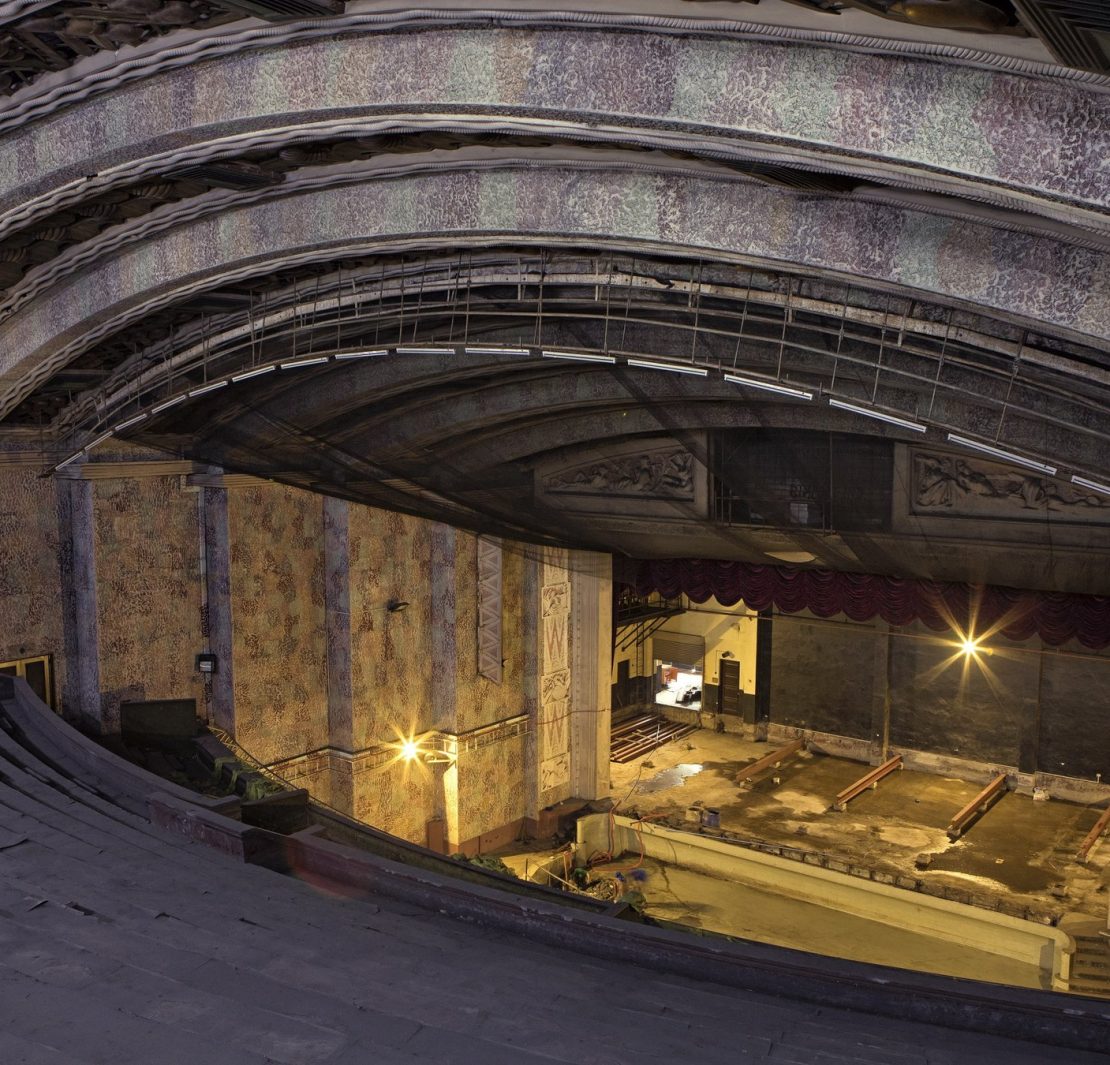In 1978, a fortune-teller predicted Nora Aunor’s loss against her rival Vilma Santos in that year’s Metro Manila Film Festival. On Inday Badiday’s TV show Would You Believe?, the fortune teller declared Aunor’s role in Atsay as her “last card” in the entertainment industry. On the awards night at the Manila Metropolitan Theater, however, the superstar broke the prediction and rose as the best performer. “Mamay, mali ang hula nila,” Aunor sobbed when she accepted her trophy.
Before the Nora-Vilma hullabaloo, the Met also witnessed the audacity of national artist for film Lino Brocka. When Celso Ad Castillo’s Burlesk Queen bagged most of the major awards in the 1977 MMFF, Brocka walked out from the ceremony as protest against the jury’s decision.

I wish I remembered the Met for those memories, or any particular show I’ve seen as a lad. However, I only remember the Met as a curious-looking abandoned pink building I’d pass by on my train route. Although its vicinity is supposedly part of Manila’s cultural zone, the area is stereotyped as a stronghold of snatchers and pickpockets. The day of the shoot was my first close encounter with the Met. Now undergoing restoration, the building is fenced with galvanized sheets. The façade bears a huge tarpaulin that tells its history. Its iconic pink paint has faded, while its windows are heavily dusted and broken. Wild plants have also grown in various nooks. “We actually [found] a tree inside. We had to kill it as it was already destroying the foundation,” says architect Timothy Ong of the National Commission for Culture and the Arts. And if there are any remaining performers at the Met, it would be the birds dancing to the backdrop of the city rush and the endless call of a transport terminal’s barker.
A Fountainhead
“The Met was a symbol of creating a national identity in a colonial social milieu,” consulting architect Gerard Lico says of the structure that was inaugurated in 1931. Designed by architect Juan Arellano, with ornaments sculpted by Italian sculptor Francesco Riccardo Monti, the structure combines elements from both Art Noveau and Art Deco. However, the Art Deco qualities were appropriated to suit the culture at the time. “It was non-classical and it was Filipino Deco,” Lico says.
Monti and Arellano still used the usual elements of both art movements, including the golden ratio and nautilus shell. The ornaments found at the Met are said to be inspired by Heinrich Heine’s poem “On Wings of Song,” which, at its core, is a call to return to nature. And that’s where the wealthy Philippine imagery comes in.


Although its details are an amalgam of the original 1930s structure and of the reopened one in 1978, the ceremony spearheaded by then First Lady Imelda Marcos, the rich Art Deco details are still intact. In the main lobby of the theater, Monti’s sculpture of Adam and Eve are still in place. The marble flooring is also from the ’30s. The stained glass window exhibits holes and cracks, but its design is still visible. Inside the theater, popular Philippine produce like mangoes and bananas curiously adorn the ceiling. Various wall sculptures portray birds of paradise, a famous plant back in the day. On the topmost floor, poles signify bamboo shoots that resemble oriental elements.

Air-conditioning may have been difficult at that time, but the ambitious edifice was kept cold—almost freezing cold. Noticeable on the floor of the theater are holes where ducts used to emit cool air from the nearby Insular Ice Plant.
The structure is clearly decaying. Situated near the Pasig River, the orchestra pit has a crater filled with water. Some of the wooden doors have been eaten by termites. But despite its horrible state, it still emits the sanctity of a temple and the comeliness of a goddess.
Collective Memory
“As an architectural work, it’s a testament to the ability of a structure to transmit cultural memories. It’s a document of 20th-century popular history,” Lico says. Before Filipinos became acquainted with movie and television stars, our affinity was for theater, and the Met served as the stage for shows starring national artist for music Jovita Fuentes, who also played Ciocio-san in Giacomo Puccini’s Madame Butterfly in Europe, and zarzuela queen Atang de la Rama. “Through the Met, we were able to host international stars of opera, of classical music. Manila became one of the destinations of international artists in the ’30s and ’40s,” Lico explains.

Beyond the magnificent bits and pieces of Philippine popular culture, the Met has also been shaped by political history. On the roof deck of the building, although some parts have faded, the original hand-painted tiles still adorn the walls of the deck; “70 Jim” is sculpted on one of the tiles, an unsolicited memory of decay. Ong points out another tile, this one bearing bullet scars from the Second World War. Then he makes a harrowing revelation: We had very nearly lost the Met. A bomb from the liberation of Manila battle was found at the orchestra section of the theater. Fortunately, it did not explode, or else the Met would have been just a distant memory.
Close Encounters
“I had my first encounter with the Met when I was in fourth grade,” Lico recalls. “It was a Friday, and we went here to watch Vilma Santos’ Vilma in Person.” He even remembers watching a play starring Beverly Salviejo as a bold star when he was in first year high school. According to Ong, the last theater show at the Met could be Jesus Christ Superstar.
There have been recent attempts to use the Met again. In 2011, the band Wolfgang held a concert here, then in 2016, the Met exhibited “London Biennale Manila Pollination.” Beyond that, the youth did not have any avenue for a personal encounter with the structure other than a project that had started in December 2015. Aptly called METamporphosis, NCCA gathered students to interact with the theater through a series of cleanup drives. “During the process, we saw the interest of the public [in heritage],” Lico recalls. “Up until now, we still receive volunteer requests. However, we have to refuse because we are already in the process of construction.”
“As we go through the process of surveying the building, we revealed layers of history. You always have to change the approach. You always have to balance the idea of modernizing the structure while maintaining its identity,” Ong says.

The restoration team takes cues from popular culture. For instance, the original color of the structure has yet to be uncovered. A broken piece of the wall reveals that the current pinkish paint is apparently not the original color. Peeling off layers of paint shows that parts of the exterior used to be clad in off-white and even gold. “[The oldest reference we got was from an] old postcard from the ’50s,” Ong says.
For the theater seats, the team referred to the iconic 1985 film Bituing Walang Ningning. The final showdown between Sharon Cuneta’s Dorina Pineda and Cherie Gil’s Lavinia Arguelles was held at the Met, and from that scene, the team found out that the seats were all red.
In two to three years, the Met is expected to officially re-open its doors to the public. However, it will never be the same again. “It has to [thrive] in the 21st century, but theater-going is no longer a mode of entertainment now,” Lico acknowledges. In response to these changes, the new Met will have a black box theater for small productions and a cinematheque. It will also reserve spaces for exhibitions. “It won’t be commercialized, but it will be more of a cultural hub and [a space where anyone can] appreciate the arts,” Lico describes.
Cultural Renewal
We are people who easily forget. And when we forget, we forget the important things. It took around 85 years before the Met got its well-deserved restoration. It saw the golden ages of Philippine cinema, the glory days of theater, the rise of boxing, the lives of homeless families, the decay of heritage and culture, and now, the renewal of Manila’s splendor. “[The restoration] will spark a cultural renaissance within this area,” Lico says with hope.
To bring back the Met to its former heyday is almost impossible. When it opens again, the shows it will exhibit won’t resemble its original acts. We no longer have zarzuelas nor actresses like dela Rama; operas are rare. It’s difficult to predict what could possibly take place at the Met. For now, at least, there is certainty that it will not remain just a fading memory or a deteriorating structure. Soon, like in the final line of Heine’s “On Wings of Song,” we would “dream our blissful dream” right here.
This story originally appeared in Northern Living, June 2017.
Read more:
The end of the Manila Navy and Army Club
The pros and cons of the growing Manila art scene
What it means to be a curator, according to Joselina Cruz
One/Zero finds its haven in Escolta
There’s life around Manila Bay, and you can help improve it
The dying industry of hand-painted movie billboards
Writer: OLIVER EMOCLING
PHOTOGRAPHY MIGUEL NACIANCENO




